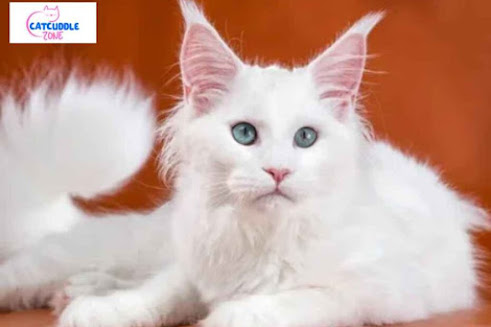Why Is My Cat Breathing Fast? Causes and Symptoms
As a cat parent, noticing your furry friend breathing rapidly can be alarming. You may wonder: Is this normal? Should I be worried? Understanding the causes and symptoms of fast breathing in cats—known medically as tachypnea—is essential for their health and peace of mind.
Let’s explore what fast breathing looks like in cats, what it might mean, and when you should call your vet.
What Counts as Fast Breathing in Cats?
Normal resting respiratory rate for cats is 20–30 breaths per minute. To check your cat's breathing rate:
-
Make sure your cat is relaxed and not purring.
-
Count how many times their chest rises in 30 seconds.
-
Multiply that number by two.
If your cat is breathing over 30 breaths per minute while at rest, it may be considered rapid breathing. Anything over 40–50 breaths per minute should be taken seriously, especially if accompanied by other symptoms.
Symptoms That May Accompany Fast Breathing
Fast breathing often comes with other signs that indicate a possible health issue. Watch out for:
-
Open-mouth breathing or panting
-
Blue or pale gums (a sign of low oxygen)
-
Labored or heavy breathing
-
Nostril flaring
-
Coughing or wheezing
-
Lethargy or weakness
-
Loss of appetite
-
Hiding or restlessness
If you notice any combination of these symptoms, it’s time to contact your vet immediately.
Common Causes of Fast Breathing in Cats
Several conditions—ranging from mild to life-threatening—can cause a cat to breathe rapidly. Here are the most common ones:
1. Stress or Anxiety
Just like humans, cats can experience fast breathing due to emotional stress, fear, or excitement. A trip to the vet, a new environment, or loud noises can trigger this. Once the stressor is removed, breathing usually returns to normal.
What to do: Create a calm environment and monitor your cat. If fast breathing persists, it may not just be anxiety.
2. Overheating or Heatstroke
Cats can overheat if exposed to high temperatures or vigorous play, especially if they’re long-haired or overweight. In such cases, they may start panting, which is unusual for cats.
Other signs: Drooling, red gums, lethargy, vomiting.
What to do: Move your cat to a cooler area and offer water. If symptoms persist, seek vet help immediately.
3. Respiratory Infections
Upper respiratory infections (URIs) caused by viruses or bacteria can make breathing difficult. These are common in kittens and shelter cats.
Other signs: Sneezing, nasal discharge, eye discharge, coughing.
What to do: Mild cases may clear on their own, but chronic or severe cases need antibiotics or supportive care.
4. Asthma
Feline asthma is a chronic inflammatory disease that affects a cat’s airways. It can lead to episodes of wheezing, coughing, and rapid breathing.
Triggers: Dust, smoke, pollen, or stress.
What to do: If you suspect asthma, a vet may recommend inhalers, steroids, or bronchodilators.
5. Heart Disease
Conditions such as hypertrophic cardiomyopathy (HCM) can cause fluid buildup in the lungs, making breathing difficult and rapid.
Other signs: Weakness, fainting, bluish gums, lethargy.
What to do: Heart disease can be silent. Regular vet check-ups and early diagnosis are key.
6. Pain
Cats in pain may breathe faster than usual. Since cats are masters at hiding pain, fast breathing might be one of the only visible signs.
Causes of pain: Injury, arthritis, post-surgery discomfort, or internal issues.
What to do: Look for other subtle signs like limping, avoiding touch, or behavioral changes.
7. Anemia
Low red blood cell count reduces oxygen in the blood, making your cat breathe faster to compensate.
Other signs: Pale gums, fatigue, loss of appetite.
What to do: Anemia can be caused by internal bleeding, parasites, or chronic disease and requires urgent vet care.
8. Trauma or Injury
Injuries—especially to the chest—can result in internal bleeding, punctured lungs, or fluid buildup. These are emergency situations.
What to do: If your cat has fallen, been hit, or had a fight, don’t wait. See a vet immediately.
When to Call the Vet
Fast breathing is not a condition—it’s a symptom of something else. Here are red flags that mean it’s time to call your vet:
-
Breathing rate over 40–50 breaths/min while resting
-
Panting or open-mouth breathing
-
Pale or blue gums
-
Labored, shallow, or noisy breathing
-
Lethargy or unresponsiveness
Always trust your instincts. If something seems off, it's better to be safe and consult a professional.
How Vets Diagnose the Cause
Your vet will conduct a thorough physical exam and may recommend:
-
Chest X-rays or ultrasound
-
Blood tests
-
Oxygen therapy
-
ECG or echocardiogram (for heart function)
-
CT scan (for internal trauma or tumors)
The treatment will depend on the underlying cause, ranging from antibiotics to oxygen support, medication, or surgery.
Final Thoughts
A cat’s fast breathing should never be ignored. Whether it's caused by stress, respiratory illness, or something more serious like heart disease, early detection is crucial.
The more familiar you are with your cat’s normal behavior and breathing patterns, the quicker you’ll recognize when something’s wrong. Keep your vet's number handy, and when in doubt—get it checked out.
Your cat may not be able to tell you what’s wrong, but their breath might.
Helpful Tip: Keep a notebook or app to track your cat’s breathing rate, especially if they have ongoing health conditions. It can help your vet diagnose issues more accurately.




Comments
Post a Comment